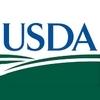Explore all the information on
Dairy cattle health
Welcome to the page about Dairy cattle health of Engormix; a source of knowledge on Dairy cattle health.
Is it possible to prevent prolapse of uterus in cattle with supplement of selenium and vitamin E 30 days before calving? In addition to a correct diet in nutrients and minerals. ...
Comments : 0
Recommendations: 0
Adult lactating cows receive more attention when it comes to the negative effects of heat stress, as compared to heifers. This is because lactating cows need to dissipate more heat, running out of milk production and feed consumption and digestion to support it. The losses, caused by exposing adult cows to heat stress conditions include drop in milk production and composition, fertility, health and cow's performance in the subsequent lactation, when exposed to heat stress conditions in...
Comments : 0
Recommendations: 3
Introduction Although several species of parasites are harbored in the gastro intestinal tract of animals only few species are clinically and economically important. Clinically important parasites of farm animals prevalent in tropical conditions like Chitwan are Paramphistomum Spp., Fasciola Spp., Toxocara Spp., Monoeiza Spp., Ascaris Spp., Taenia Spp., Haemonchus Spp. and other different nematodes species. The major problem associated with Gastro intestinal parasitic...
Comments : 0
Recommendations: 1
In 2012, we set out to establish a new analytical chemistry platform for the analysis of soil, crop, plant, leaf and insect samples with focus given to insecticides, toxin residuals, phosphates, odors, nutrients, lipid precursors and pheromone signals underlying sex-specific reproductive behaviors. Meanwhile, we set out to organize a communication and exchange platform for cooperation between China and France in the field of Agricultural Biotechnology, Applied Microbiology, Chemistry,...
Comments : 0
Recommendations: 0
Introduction At birth, the rumen is non-functional, making calves pre-ruminants. By weaning, the rumen is the principal site of volatile fatty acid (VFA) absorption, responsible for over 50% of all VFA being absorbed (Allen, 1997). Consequently, the calf rumen must undergo a ruminant transition, where the rumen goes from non-functional to functional in 6-10 weeks, coinciding with the period when most dairy calves are weaned (USDA, 2012). The transition...
Comments : 0
Recommendations: 0
Introduction Coccidiosis is an infectious disease of the intestinal tract of wild and domestic animals caused by different protozoa. These include but are not limited to Isospora, Neospora, Cryptosporidium, and Eimeria of the phylum Apicomplexa. Those parasites are widespread, especially where intensive production systems are used to raise livestock. They cause mortality, poor growth, and impaired performance. In addition to mortality and reduced growth, coccidiosis also affects...
Comments : 0
Recommendations: 1
It is repirted in news that Limpy skin disease has spread in Chattigarh and MadhyaPradesh and may furtber spread to Uttar Pradesh Bihar Haryana and Punjab.
Are there any vaccines or medicenes for this disease....
Comments : 3
Recommendations: 0
In recent years, adjustments to the production costs in the dairy industry becomes crucial in light of current circumstances. There has been a continuous reduction in profit margins and increasing instability in this industry. Each stage in the production process requires maximum efficiency from both professional and economic points of view. The calf rearing stage is an integral part of the dairy business, and takes large part in determining the future quality of a dairy herd.
A...
Comments : 0
Recommendations: 6
Introduction Teat pox in dairy cows is very common but problematic disease, caused due to mild infection of udder and teats of dairy cow. Very often it is misunderstood as cow pox which is rare disease, seldom it happens. It is a zoonotic disease, generally occurs in animals of age more than 2yrs. Freshly calved and recently introduced cattle are more susceptible. Its leads to difficulty in milking may increase the chances of mastitis. The disease can be transferred to humans,...
Comments : 1
Recommendations: 0
For the last few months, it seems that immunity has been at the forefront of our thought process – not just for the dairy industry but world-wide. While everyone has been focused on staying healthy and have become increasingly aware of the importance of a well-functioning immune system (IS), these are concepts that the dairy producer needs to keep in mind almost every day.
The IS in all animals is critical and complex. Life is dependent on a functional IS. Its primary function...
Comments : 4
Recommendations: 3
Dear Users, This is an interesting forum from our Spanish community, generated by Enrique Astorga from Canada: As a dairy farmer if you should take a hit of over 80 of mastitis treating the problem without resorting to antibiotics, is to leave your old practices using antibiotics or try to see other alternatives? What would you say if you have 90 success in treatment? Many dairy farmers in North America are in the search for alternative treatments without...
Comments : 11
Recommendations: 0
Introduction Bovine respiratory disease (BRD) is the most important cause of economic loss of the beef industry in many parts of the world (12, 14, 26). It is a multifactorial condition that involves host and environmental factors, and several viruses and bacteria. The most common viruses associated in cattle with BRD are bovine herpesvirus (BHV-1), bovine parainfluenza virus 3 (BPIV-3), bovine viral diarrhea virus 1 and 2 (BVDV-1/2), bovine respiratory syncytial virus (BRSV)...
Comments : 0
Recommendations: 0
Animal Health Investment USA is a premier investment forum showcasing the most exciting partner opportunities in animal health and connecting those businesses together with financial investors and strategic corporate partners.
Our virtual forum will be split into two tracks, a human biotech and...
Comments : 0
Recommendations: 0
Dr. Jesse Goff from Iowa State University will speak on “Why Cows Become Hypocalcemic and Steps to Reduce Impact" in this one hour long webinar on August 4th.
Since April, the Real Science Lecture Series, by Balchem, has already featured prominent ruminant nutrition experts like Mike Hutjens (University of Illinois), Heather White...
Comments : 0
Recommendations: 0
According to the severity of twisting, it is decided to apply a rolling method or surgical treatment to correct uterine torsion in time, return to the normal anatomical position and ensure calving smoothly. Conservative treatment "Rolling Maternal Method" to correct uterine twist: lay soft grass on the broad flat ground lay down cows, tie the forelimbs and hind limbs with ropes respectively, leaving about 100 cm of rope head. The cows lie on the same side of the uterus twist and pull the...
Comments : 6
Recommendations: 1
Wenli Li (US Dairy Forage Research Center-USDA) shared a study on the impact of early exogenous introduction of microbes into the small intestine of calves, during the 8th Symposium on Gut Health in Production of Food Animals in St. Louis, USA....
Comments : 1
Recommendations: 1
We have Holstein Fresian heifers in advanced pregnancy imported from Australia. In some animal the quarter on left rear side have firm swelling of tissue like firosis . The treatment with ketoprofen and antibiotic respond good.The question is what may the cause of this swelling ? Secondly, should we treat it or wait for parturation of the affected animals? ...
Comments : 0
Recommendations: 0
Introduction
Past research in dairy cattle nutritional management has focused almost exclusively on the nutritive aspects of the diet, resulting in many discoveries and improvements in dairy cow health and production. Despite many advances this field we are still faced with several challenges associated with feeding dairy cattle. Recent field observations suggest that housing and management can play as large of a role as nutrition in the performance and health of...
Comments : 4
Recommendations: 4
Introduction Bovine lameness is an important condition in commercial dairy and beef operations worldwide. Its economic impacts include decreased reproductive performance and milk yield and increased culling rates, milk losses and labor. One relatively new finding in the field of lameness is the non-healing lesions (NHL) such as toe necrosis (Blowey, 1999; Tozzo, 2000) and wall ulcers (Holzhauer, 2008; Cook and Burgi, 2008). These lesions typically are unresponsive or poorly...
Comments : 1
Recommendations: 1
Introduction • Questions have risen on impact of many hoofbath chemicals on human health and the environment, and also concerns about water usage. • Topical spray disinfectant solutions are an interesting alternative to hoofbaths because they address those concerns. • While 1 L/cow disinfecting solution is standard recommendation in a hoofbath treatment, only 50 mL/cow would be required if spraying. • This study evaluated the preventive...
Comments : 1
Recommendations: 1
























